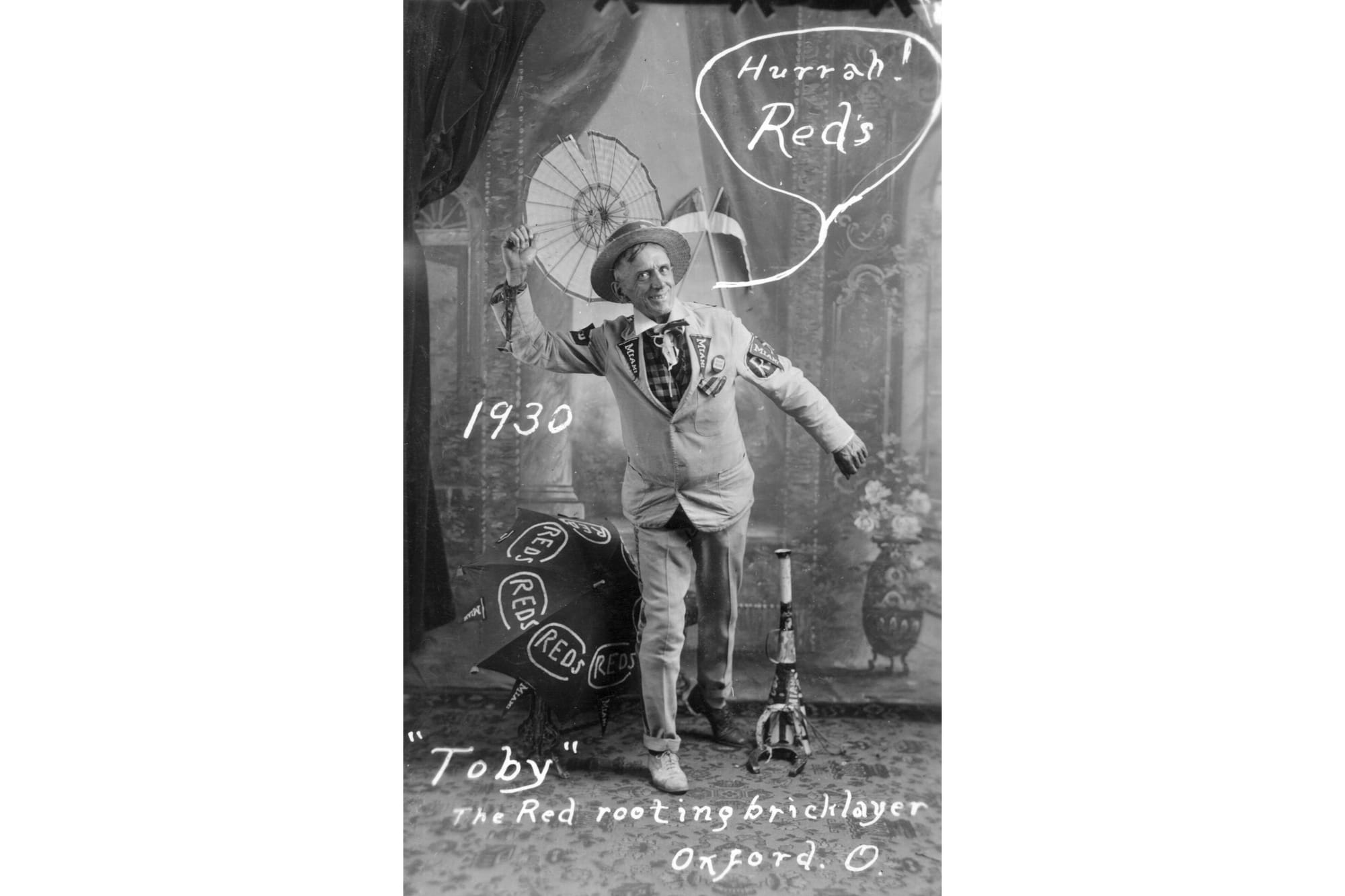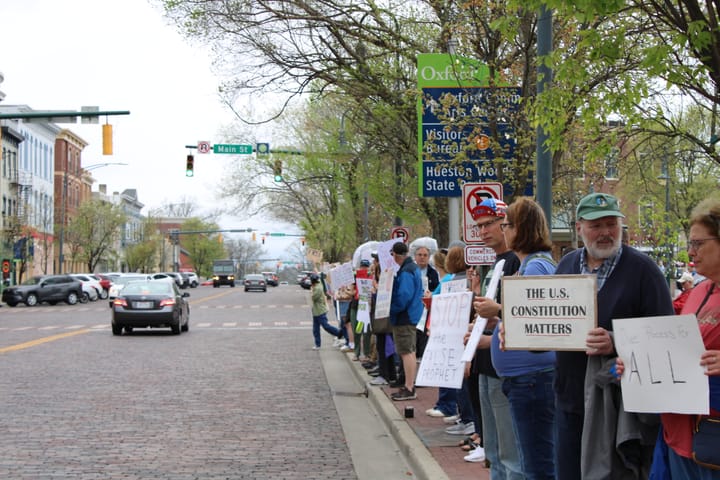Local Legends: Building walls and crashing gates
Harry Thobe was one of Oxford's most famous — and eccentric — sports fans. He's known for both his gameday antics and his prolific stonework in and around town.

Editor's Note: This story has been updated from its April 4 print version to clarify that Thobe's Fountain was initially rebuilt in 1952 before being replaced at a later date.
To state that Harry Sylvester Thobe was a sports fan is an unimaginable understatement. Also a master brick and stone mason, Thobe took pride in three things: building walls, crashing gates and rooting for the home team.
The first born child of George H. and Elizabeth (Evans) Thobe, Thobe was born in Evansville, Indiana on February 11, 1870. Thobe’s mother kept house while his father supported the family as a wood carver.
By the time he was four months old, the family had moved to rural Pope County, Illinois. They found their way back to Evansville by 1880 before eventually settling in Covington, Kentucky.
Over his formative years in Covington, Thobe developed his mastery of brick and stonework. He initially came to Oxford around 1895 to lay brick as part of the construction of the Cincinnati, Hamilton, & Indianapolis Railroad Depot. On June 15, 1898, he married Hyla (Keller) Thobe in Butler County, shortly after doing the brickwork for Herron Gymnasium on Miami’s campus.
The Thobes had two children: Ralph Thobe, born in 1899, and Myla Jane (Thobe) Landfair, born in 1901.

Thobe is remembered as a “super fan” of the Cincinnati Reds and Miami University who became a well known character around both Oxford and the larger greater Cincinnati area. He called himself the Reds’ “Number One Fan.” Referred to as “Mr. Opening Day,” Thobe attended every Reds' Opening Day starting in 1894, as well as most of their home games.
And when he attended, he didn’t just sit in his seat and eat hot dogs.
With his twelve diamond-studded gold teeth smiling, Thobe wore a patch adorned pinstripe seersucker, straw hat, one red shoe and one white shoe, as he danced jigs up the aisles, yelled into his megaphone and twirled his red parasol, vigorously cheering for a Reds’ victory.
Thobe didn’t only become a fixture at Crosley Field, but also at Miami’s sporting events. He never missed a homecoming game and could be seen annually dancing along with the band in Miami’s homecoming parades with the university’s pennants added to his usual get-up.
Thobe was an eccentric to the max, as evidenced by newspapers published during his life. The Miami Student covered the breaking of the “Denison Jinx” in 1917 following a win by the Miami football team. Thobe credited his lucky rabbit’s foot with the win.
In 1934, Thobe challenged “any man over 60 years of age to compete with him in a race around the bases” at Crosley Field, adding that he, at 65 years old, could do it in 30 seconds and would make it worth the while of any competitor that beat him.
Perhaps the most tangible and permanent monument to Thobe’s eccentricity was his family home, “Sunset Place,” that he constructed at 131 W. Chestnut St. purportedly over the course of 20 years. The house, which is now the Talawanda School District Offices, is a showcase of his skill with varying types of masonry from stone to brick to stucco.
In addition to helping to build several other area structures, Thobe also built and donated a fountain to Miami University. He meticulously maintained the fountain throughout his life, leading to it becoming known as Thobe’s Fountain.
Thobe was also an accomplished gatecrasher. He took pride in having gone to see twenty World Series games, eight Rose Bowls, three Orange Bowls, a Sun Bowl and several heavyweight boxing championships, all without tickets.
In 1939, the Reds’ gave up on making Thobe buy a ticket and gave him a life pass to all home games. However, they also banned him from the field of play after he once ran the bases and slid into home during a rain delay, while wearing his white suit, creating a muddy mess for Crosley Field’s grounds crews.
Tragedy struck the Thobe family in 1940 when Ralph Thobe was severely injured after falling under a moving Oxford bound train he was trying to board in Hamilton. Thobe was at his bedside when he died at Mercy Hospital a short time later.
After being injured on a job site in April 1948, Thobe was quoted as saying he was just thankful that it “didn’t happen on Opening Day.” That season’s Opening Day would be his second-to-last.
Thobe suffered a stroke brought on by cardiorenal disease while wintering in Florida in 1950. He died at Mercy Hospital on Mar. 30, 1950, just under three weeks before what would have been his 57th Opening Day.
In its summary of the Reds’ opening game, the Cincinnati Enquirer noted Thobe’s absence, reporting, “It took death to keep Thobe absent from yesterday’s game.”
After a funeral service at St. Mary’s, Thobe was laid to rest in the Oxford Cemetery. With no one left to maintain it, Thobe’s Fountain fell into disrepair and was rebuilt in 1952 before eventually being replaced entirely. The Kappa Kappa Gamma Centennial Memorial is now located on its site.
Thobe’s fanaticism is remembered in Oxford and by Major League Baseball. A fabric-mache statue of him, by artist Kate Ritter, was placed on exhibit in the National Baseball Hall of Fame. In the end, Thobe danced and cheered all the way to Cooperstown.
Brad Spurlock is the manager of the Smith Library of Regional History and Cummins Local History Room, Lane Libraries. A certified archivist, Brad has over a decade of experience working with local history, maintaining archival collections and collaborating on community history projects.




